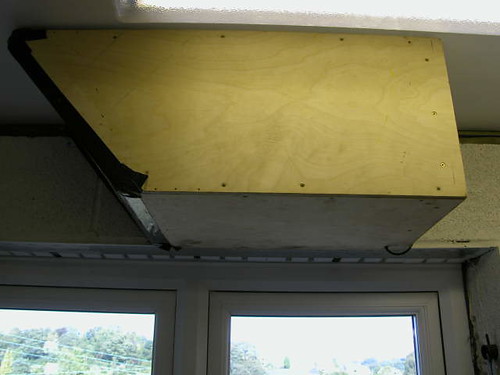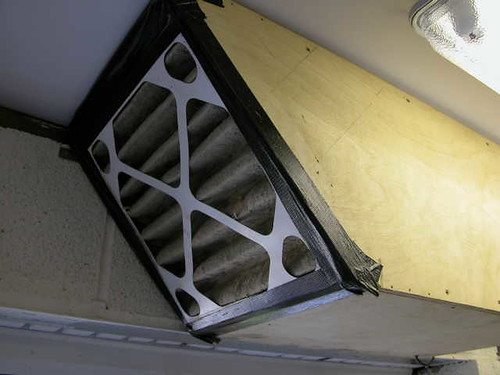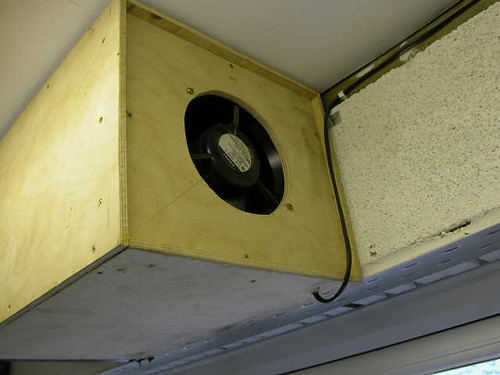SVB
Established Member
I just thought I would share with you what I use for my general workshop air filter.
It is simply an old (read free) industrial fan rescued from the tip, mounted in the back of a 1/2" ply box with a 12" sq filter mounted in the mouth. The filter (£3.53 ea) is taped in place against blocks to prevent any side leakage and is rated at 1 micron effective.
I don't suppose it will have microclean revising their business model but it seems to work reasonably well (the filter has plenty of dust on the face anyway!) and will certainly serve the purpose until the lottery ticket comes good!



It is simply an old (read free) industrial fan rescued from the tip, mounted in the back of a 1/2" ply box with a 12" sq filter mounted in the mouth. The filter (£3.53 ea) is taped in place against blocks to prevent any side leakage and is rated at 1 micron effective.
I don't suppose it will have microclean revising their business model but it seems to work reasonably well (the filter has plenty of dust on the face anyway!) and will certainly serve the purpose until the lottery ticket comes good!







